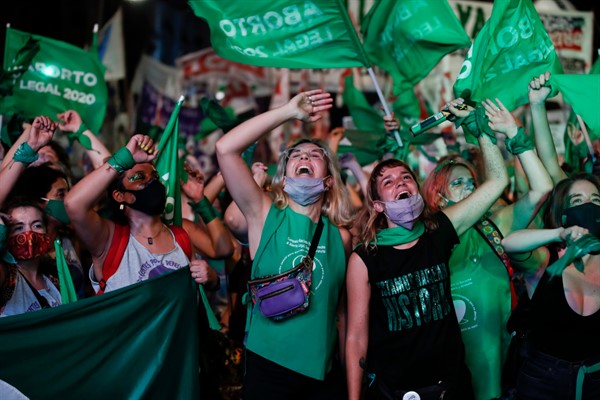At dawn on Dec. 30, a sea of humanity outside of Argentina’s Congress in Buenos Aires fixed their eyes on the nine giant screens the government had installed to broadcast the parliamentary session taking place inside. For 12 hours, Argentina’s Senate had been debating a bill, already approved by the House of Representatives two weeks earlier, that would legalize abortion through the first trimester of pregnancy and offer it free of cost in the country’s public health system.
The crowd, too, had been there all night, occupying the streets in a vigil that was both festive and solemn, designed to put pressure on the senators voting inside. They filled more than 10 blocks surrounding the Congress building with tents, screens, music, assemblies, artistic performances, soccer matches, public speakers and more. The composition of the crowd expressed the movement’s diversity and transversality, comprising everyone from students to sex workers, from union members and cultural activists to political parties and Indigenous organizations. Among the groups present were ecofeminists, feminists from the slums and peripheries, rural feminists, feminist migrants, black and brown feminists, LGBTQ+ feminists and many others. Though the majority were teenagers and young women, there were also older longtime activists and young girls accompanied by their mothers, as well as many attendees new to this kind of demonstration, including teenage boys and young men.
All of them were linked to or part of the National Campaign for Legal, Safe and Free Abortion. Formed 15 years ago as a nationwide network, the campaign is defined by its federal character as well as its emphasis on participatory democracy and pluralism. It played a central role in organizing the vigil in Buenos Aires as well as in 120 other cities around the country that night. Its symbol, the green scarf, had become internationally popular as an iconic emblem of the feminist struggle.

